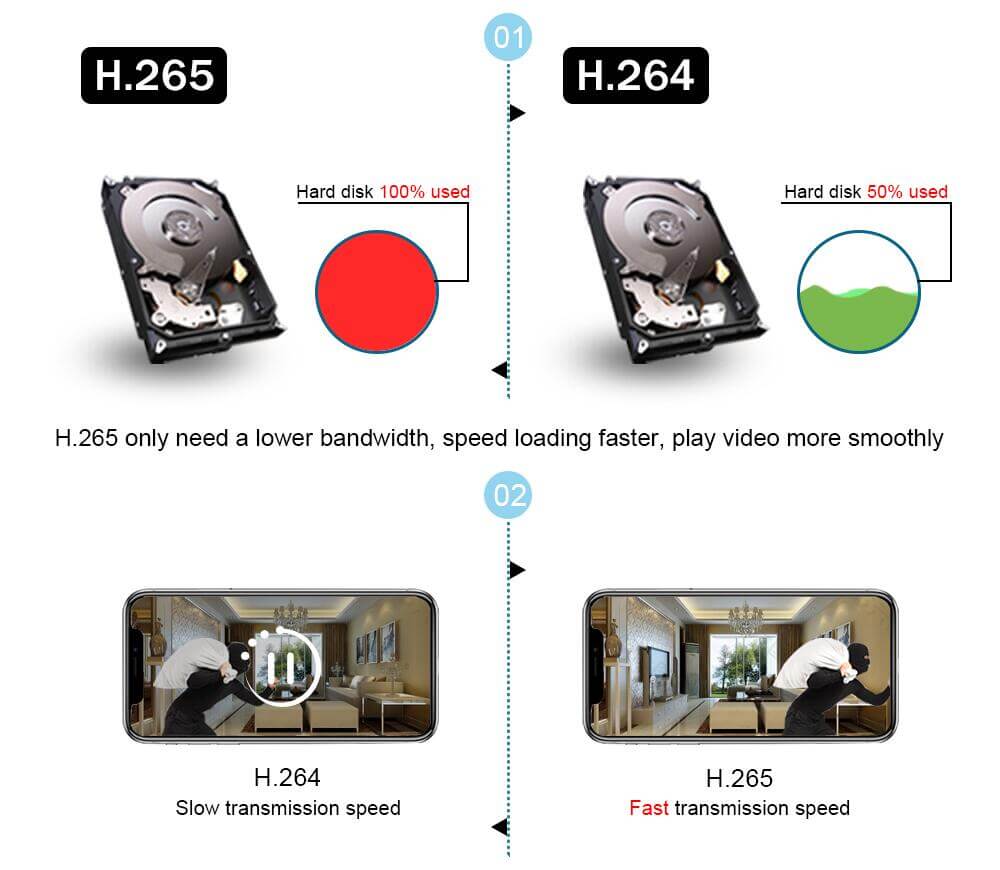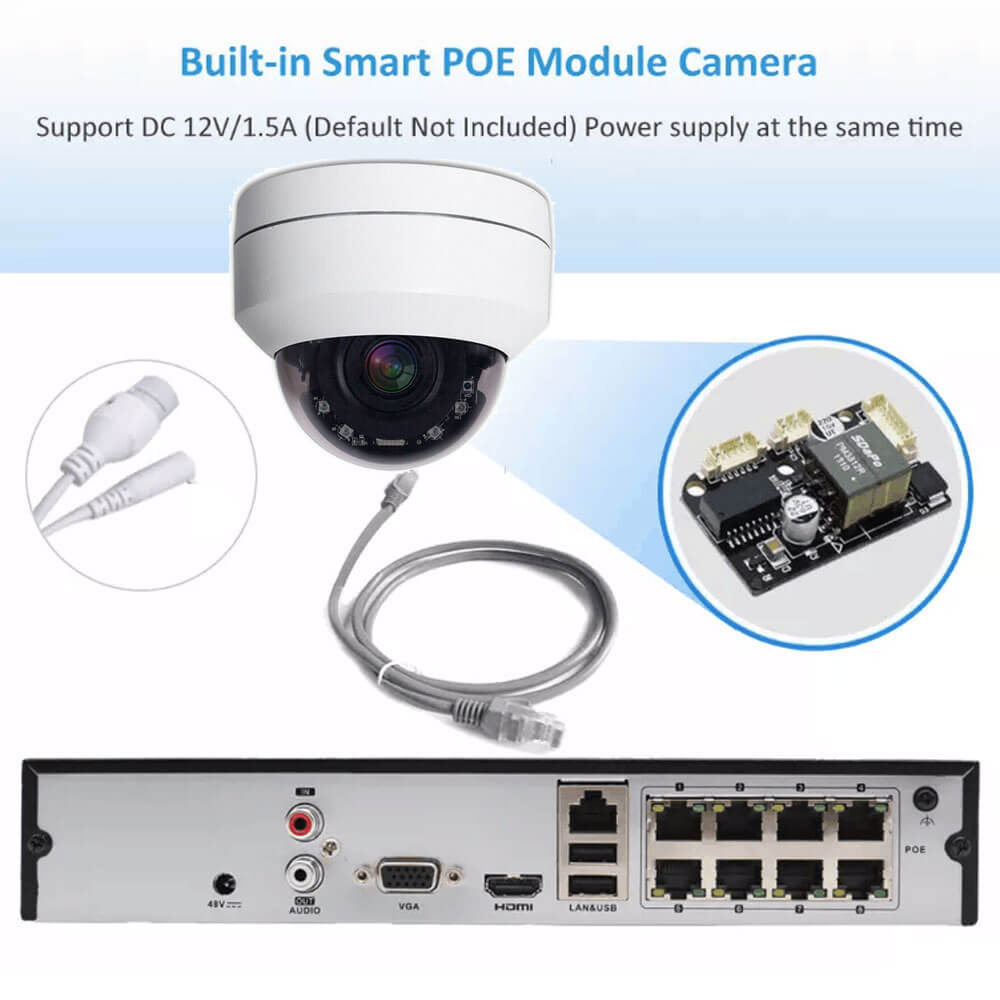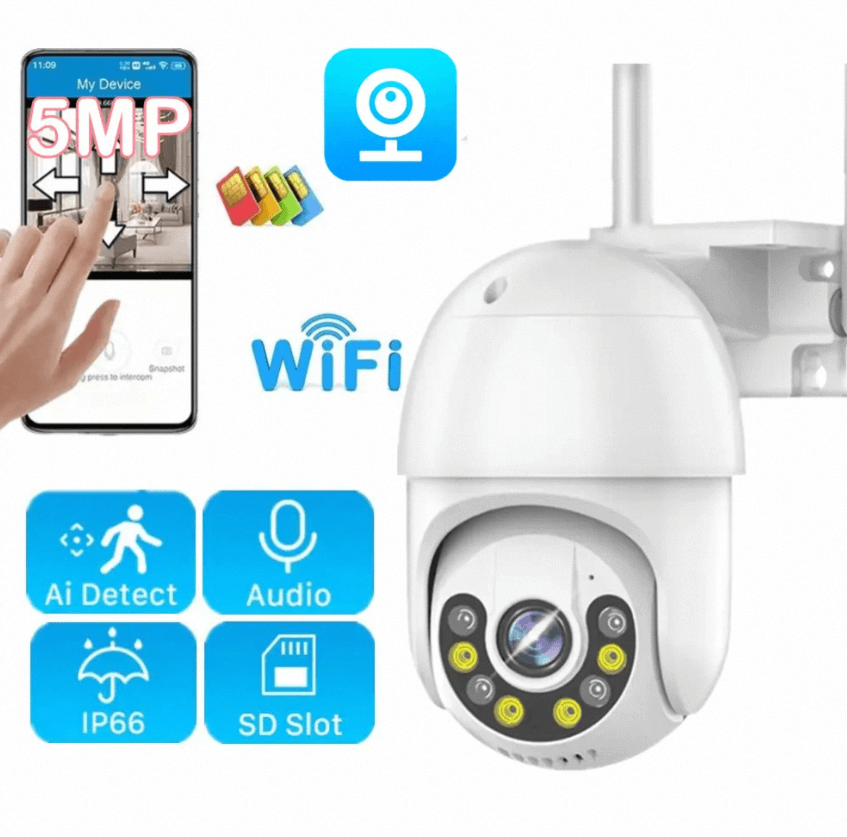The growing importance of surveillance systems has decided between local and cloud storage solutions increasingly critical. Whether you’re protecting a home, business, or enterprise, how you store your surveillance footage can significantly impact accessibility, reliability, and security. Modern surveillance systems capture vast amounts of video data that must be stored securely while remaining accessible when needed. Local storage offers on-site control and doesn’t depend on internet connectivity, while cloud storage provides convenient remote access and scalability options. The best choice ultimately depends on your specific security needs, business requirements, and risk tolerance.
What are the fundamental differences between local and cloud storage?
Local and cloud storage for surveillance footage represent two fundamentally different approaches to managing security data. As a surveillance system integrator at JER-Tech, I’ve seen how critical understanding these differences becomes when designing effective security solutions.
At its core, local storage utilizes on-premises equipment—typically Network Video Recorders (NVRs) or Digital Video Recorders (DVRs)—physically located within your facility. These devices connect directly to your cameras through closed networks, creating self-contained ecosystems that operate independently of external services. Your footage travels from cameras to these recording devices with their installed hard drives, never leaving your physical control.
Cloud storage, conversely, transmits encrypted video data over the internet to remote data centers. This architecture creates an entirely different security paradigm—one where accessibility expands while direct physical control diminishes. The technical infrastructure supporting cloud solutions involves multiple geographically distributed servers with sophisticated redundancy systems that would be prohibitively expensive for most organizations to implement locally.
| Storage Type | Data Location | Connectivity Requirement | Access Method |
|---|---|---|---|
| Local Storage | On-premises | Internal network only | Direct/VPN access |
| Cloud Storage | Remote data centers | Internet connection | Web portal/mobile app |
These architectural differences directly impact security, accessibility, and reliability. Local solutions provide complete control but limited remote access, while cloud options offer anywhere-accessibility with dependencies on network connectivity and third-party providers. Neither approach universally outperforms the other—each offers distinct advantages that make them suitable for different security requirements. If you’re unsure which approach best fits your needs, our team at JER-Tech’s contact page can help analyze your specific situation.

Why might local storage be the right choice for your surveillance system?
Having installed hundreds of surveillance systems over my years at JER-Tech, I’ve seen firsthand why local storage remains the preferred choice for many security-conscious organizations. The appeal goes far beyond simple tradition—local storage provides tangible benefits that directly address critical security concerns.
The most compelling advantage? Complete physical control over your surveillance footage. With on-premises storage, your sensitive video data never leaves your facility. For banks, government agencies, and healthcare providers facing strict regulatory requirements, this creates an unbroken chain of custody that simplifies compliance. You’ll never wonder who might have access to your footage when it’s stored within your own walls.
| Local Storage Benefit | Real-World Application |
|---|---|
| Internet-Independent Operation | Critical infrastructure protection |
| One-Time Cost Structure | Long-term budget planning |
| Customized Storage Hardware | 24/7 high-resolution recording |
Unlike cloud solutions, local storage functions perfectly without internet connectivity—a crucial factor for remote facilities or during network outages. You’ll capture every critical moment regardless of your connection status. This reliability makes local storage ideal for security applications where failure simply isn’t an option.
The financial picture often favors local storage for stable, long-term installations. While the initial hardware investment might seem substantial, eliminating monthly subscription fees creates predictable budgeting without recurring costs. This approach pairs perfectly with facilities where surveillance requirements remain consistent over time.
Having trouble determining if local storage suits your specific needs? Our team at JER-Tech’s contact page can help evaluate your unique requirements and recommend the optimal storage approach for your security goals. Local storage isn’t universally superior, but for organizations prioritizing control, reliability, and predictable costs, it remains the gold standard.

How does cloud storage transform surveillance capabilities?
In my fifteen years designing surveillance systems at JER-Tech, I’ve witnessed the remarkable transformation cloud storage has brought to security operations. While local solutions excel in controlled environments, cloud storage has fundamentally reimagined what’s possible in surveillance.
The most game-changing aspect? Accessibility without boundaries. Your security personnel can monitor footage from anywhere with internet access—whether they’re at home during an emergency, traveling between sites, or managing multiple facilities. This capability alone has revolutionized how organizations respond to security incidents.
| Cloud Innovation | Business Impact |
|---|---|
| Centralized Multi-site Management | 30-50% reduction in administrative overhead |
| AI-Powered Analytics | Proactive threat identification vs. reactive review |
| Automatic Scale-Up Capacity | Eliminates emergency hardware purchases |
Cloud systems transform passive cameras into intelligent security assets through AI analytics that would require prohibitively expensive computing resources to deploy locally. These systems can automatically detect unusual behavior, analyze crowd movements, and generate instant alerts, turning your footage from a post-incident investigation tool into a real-time prevention system.
For multi-location businesses, the ability to standardize security operations across all facilities from a single dashboard eliminates the nightmare of managing separate systems at each location. The constant automatic updates mean you’re always running the latest security patches without IT intervention.
I’ve helped numerous clients at JER-Tech transition to cloud surveillance, and the operational flexibility is often the deciding factor. The ability to instantly scale storage capacity up or down without purchasing hardware provides unmatched adaptability for businesses with fluctuating needs. Cloud storage has truly transformed surveillance from static recording systems into dynamic security platforms that integrate seamlessly with broader business operations.
How do costs compare between local and cloud storage options?
As a security systems consultant at JER-Tech, I’m frequently asked about cost comparisons between storage options. The truth? It’s rarely as straightforward as clients hope.
Thinking about surveillance storage costs requires looking beyond the obvious price tags. Local storage follows a capital expenditure model—you’ll face higher initial costs for NVR hardware and storage drives but avoid recurring fees. Cloud storage shifts to an operational expenditure approach with lower upfront investment but ongoing subscription payments that never end.
| Cost Factor | Local Storage | Cloud Storage |
|---|---|---|
| Initial Investment | $1,000-5,000+ | $0-500 |
| Ongoing Monthly Costs | $10-50 (electricity/maintenance) | $50-500 (subscription fees) |
| 3-Year Total Ownership | Front-loaded costs | Steady predictable expenses |
What many organizations overlook are the hidden expenses. With local storage, you’ll eventually face hardware replacement costs, power consumption, cooling requirements, and potentially IT staff time. I’ve seen clients surprised by the true 5-year cost of ownership after factoring in maintenance and eventual expansion needs.
Cloud solutions eliminate these hidden hardware costs but introduce perpetual payments. The calculation becomes particularly interesting for growing businesses—local systems require purchasing capacity for peak future usage, while cloud storage can flex with actual needs.
Need help running a cost analysis specific to your situation? Our team at JER-Tech’s contact page can develop a detailed comparison based on your exact requirements. The most cost-effective solution depends entirely on your organization’s growth projections, accounting preferences, and specific security needs.

What security vulnerabilities exist with each storage option?
After managing security implementations at JER-Tech for over a decade, I’ve seen firsthand how surveillance storage can create unexpected security vulnerabilities. The irony isn’t lost on me—the very systems designed to enhance security can introduce new risks if not properly protected.
With local storage, the physical security paradox is something I discuss with every client. The same on-premises equipment that gives you complete control also becomes a primary target. I’ve investigated numerous cases where thieves specifically targeted NVRs to destroy evidence of their crimes. It’s like having a safe that advertises its location—criminals know exactly where to focus their efforts.
| Vulnerability Type | Local Storage | Cloud Storage |
|---|---|---|
| Physical Threats | High (direct access) | Low (remote servers) |
| Network Threats | Medium (local network) | High (internet exposed) |
| Disaster Vulnerability | High (single location) | Low (geographic redundancy) |
Local systems also suffer from firmware update challenges—I regularly encounter systems running years-old software with known security vulnerabilities because updates are manual and often overlooked. Environmental disasters present another serious risk, as a single fire or flood can destroy both your property and all evidence of what happened.
Cloud storage shifts the vulnerability landscape entirely. The footage transmission process becomes a potential weak point—data must be properly encrypted during transit. Access control becomes critical, as weak password practices can allow system compromise from anywhere in the world. Having helped clients evaluate provider security at JER-Tech, I emphasize the importance of understanding their security certifications and data handling policies.
The best security approach? Honestly assess which vulnerability profile better matches your organization’s security strengths.
How can hybrid solutions offer the best of both storage worlds?
After years of designing surveillance solutions at JER-Tech, I’ve found that the most elegant storage systems often refuse to choose sides in the local versus cloud debate. Why pick just one when you can harness the strengths of both?
Hybrid storage approaches represent the ‘have your cake and eat it too’ solution, many of my clients didn’t realize existed. These systems typically record footage locally first, ensuring uninterrupted capture regardless of internet status, while automatically uploading critical segments to cloud platforms based on intelligent rules you define.
| Storage Scenario | Recommended Approach | Benefit |
|---|---|---|
| Routine footage | Local storage (30-day retention) | Cost efficiency, immediate access |
| Alarm events | Cloud backup (90+ day retention) | Tamper protection, remote access |
| High-security areas | Simultaneous local/cloud recording | Maximum redundancy |
The beauty of hybrid implementations lies in their flexibility. I recently configured a system for a retail client where standard operational footage remains local with a 30-day retention cycle, but all motion events, register transactions, and loading dock activity automatically upload to cloud storage with extended retention. This provides immediate access to recent footage while ensuring critical evidence remains protected from physical tampering or disasters.
Modern manufacturers have simplified these once-complex integrations. The systems we install at JER-Tech now automatically manage the complexity of dual-storage architectures, optimizing allocation based on bandwidth availability and event importance. This approach isn’t merely compromising between options—it’s leveraging each storage type precisely where it performs best.
Conclusions
The choice between local and cloud storage for surveillance footage ultimately depends on your organization’s specific needs, priorities, and constraints. Local storage offers complete control, predictable costs, and independence from internet connectivity, but requires greater upfront investment and physical security measures. Cloud storage provides superior accessibility, automatic updates, and built-in redundancy, but introduces ongoing subscription costs and internet dependencies. Many organizations find that hybrid solutions offer the ideal balance, combining immediate local recording reliability with the long-term protection and accessibility benefits of cloud storage. Whatever approach you select, prioritize proper implementation, regular maintenance, and appropriate security measures to ensure your surveillance footage remains accessible and protected when you need it most. The right storage solution is one that aligns with your security requirements, technical capabilities, and budget constraints—whether that’s fully local, completely cloud-based, or a customized hybrid arrangement.


